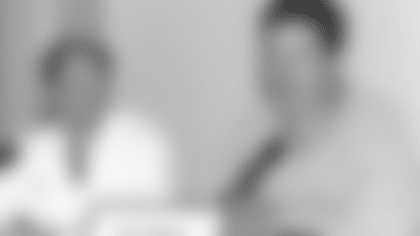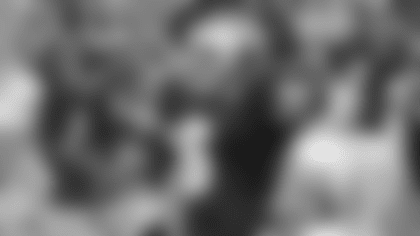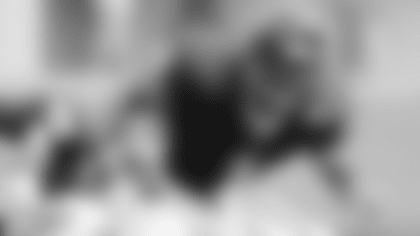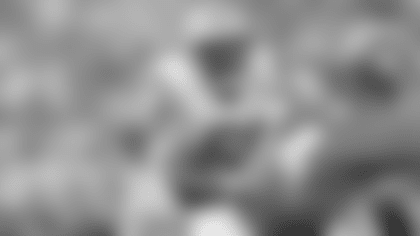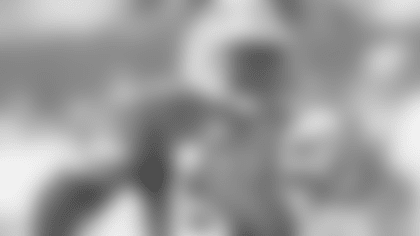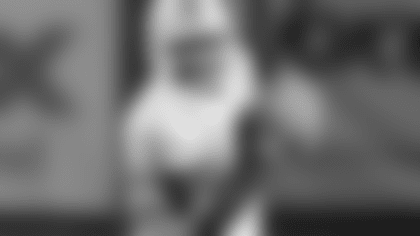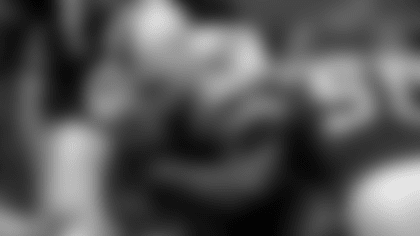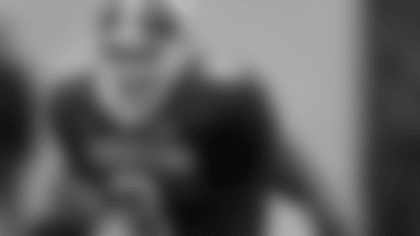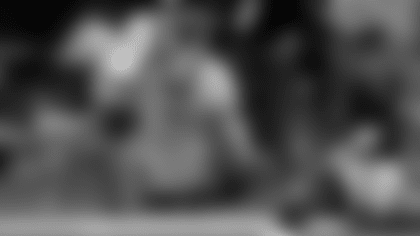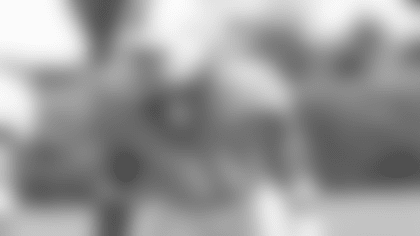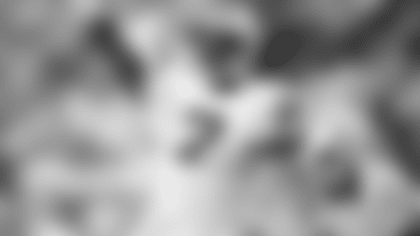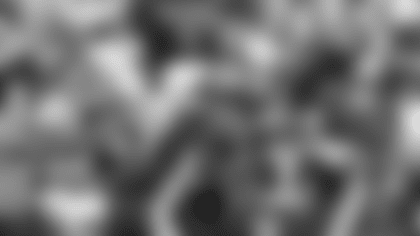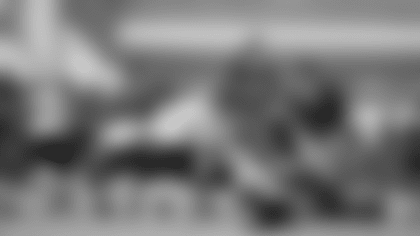For the first time in almost two months, Drew Bledsoe was cleared to play football. Now the only question that remains is when he'll get to do so.
Bledsoe joined his team of doctors at a press conference at Massachusetts General Hospital on Nov. 13 and they announced that the former Pro Bowler was completely healed and allowed to return to full-time duty. Patriots team physician Dr. Bertram Zarins, joined by Dr. David Berger, who treated Bledsoe at the time of his injury, and Dr. Andrew Warshaw, the chief of surgery at Mass. General, opened the proceedings by simply stating Bledsoe could return.
"The news today is that we're clearing Drew to play," Zarins said.
That's fine for Bledsoe the person, but what does it mean for the football player? It's been more than seven weeks since he last took a snap and it only stands to reason that he'll need time to work his way back into football shape where he'll be able to withstand the rigors of NFL life.
"I'm itching to get back in there," Bledsoe said. "I'm going to do everything in my control to be on the field on Sunday [against the Rams]. Ultimately, that's not my decision, but between now and then, I'll do everything within my power to see that that happens."
"If you get injured and the other guy comes in and plays at a higher level than you're capable of playing, then he continues," Bledsoe continued. "But at the same time, if I come back in practice and show that I'm the better guy for the job, then I should play. I will say I have a great deal of confidence in my ability to play this game, and I intend to make it very hard for [Tom] Brady to stay on the field. But if he's playing better than I am, he'll keep playing."
Head Coach Bill Belichick said during his press conference on Nov. 12 that he expected Brady to take the majority of snaps in practice and start against the Rams. The most likely scenario for Bledsoe would be for him to regain his form in practice this week and slowly work his way back into the picture.
Brady started seven straight weeks heading into the St. Louis game and won five of those starts. His performance level in those games was reasonably consistent, making Belichick's decision, at least in the short term, easier.
Bledsoe was hit with several questions about his expectations in light of the job done by Brady in his absence and said he feels he deserves a chance to recapture his starting job while understanding there are no guarantees.
"If it's within my power to be on the field Sunday, I'm going to do everything to see that that happens," Bledsoe said. "Nothing is promised to anyone in this game. Since I've been in the league from the time I was a rookie I've been the starter. That said, I have to prove it again. I have to prove that I'm the best guy to go out and win football games.
"The team's done great and Brady's played excellent football and I'm ecstatic about that. At the same time it's been bittersweet because I'm not out there. But I have to make it difficult for Brady to stay on the field by playing better."
While the Bledsoe story remains very much unsettled on the field, his doctors assured during the press conference that's not the case off it. Zarins and Berger described in detail the accounts of the injury. Bledsoe sheared a blood vessel as a result of a Mo Lewis hit midway through the fourth quarter of a 10-3 loss to the Jets on Sept. 23. About a half-hour after the hit, blood began to fill his left chest cavity between his chest wall and lungs, causing his lung capacity to be restricted.
The doctors added that at no point did Bledsoe suffer a collapsed lung or a concussion, as had been reported in the past. They said Bledsoe suffered a hemothorax, a condition that results when the chest cavity fills with blood, and not a pneumothorax, or a collapsed lung.
"Drew never had a collapsed lung," Berger said. "A collapsed lung means that there is air that gets in between the chest wall and the lung itself. At no time did he have a collapsed lung. He had what we call a hemothorax. He did not have a pneumothorax, which is a collapsed lung."
While the medical semantics may be questioned, the important news is that Bledsoe will be able to resume his full-time duties. Zarins went on to explain the thought process behind allowing Bledsoe back into the Jets game despite the hit, explaining that at no time was there any indication of chest pain. He also said Bledsoe's condition changed from the time of the hit until after the game.
"I was right next to the play a few feet down and I was there within seconds and he was not unconsciousness," Zarins said. "He was completely awake, had no amnesia and no signs of a head injury. He got hit hard and his whole body got hit hard, that includes the head and chest. I evaluated him neurologically and he passed all of his neurological tests that we use for concussions. Things change and evolve. At the moment I think it's a matter of semantics, but I don't think he had a true concussion."
Bledsoe also was seen by five specialists, who all agreed with the current plan of care. Berger said one of the things that made this case difficult was that it was so unique.
"I think this was a very unusual injury," Berger said. "I don't think we've ever seen an injury like this in a professional athlete. The chance of him having a re-bleed is significantly lower than it was prior to him having this injury. When you have an injury to the space between your chest wall and your lung, that space scars after the injury heals. Consequently things are stuck over where those blood vessels run that weren't there before."
Berger, who treated Bledsoe at the hospital upon his arrival, reported he checked for other injuries at the time and only found problems in his chest.
"At that time I placed a chest tube into his left chest and drained blood from his chest," Berger said. "We connected that tube up to a device which allows us to give him his blood back and basically the only blood Bledsoe received during this entire process was his own. The bleeding stopped on its own and the tube was subsequently removed.
"He eventually was discharged from the hospital and had chest X-rays as a follow up. He developed some fluid in his chest, which is to be expected after this type of injury. You get a reactive effusion, which is a clear fluid — not blood — that develops. That was removed with the help of a radiologist. At present, his chest X-ray is completely normal, there is no blood in his chest and we feel he is completely healed from this injury."
Now it's up to Belichick to decide when Bledsoe will be completely ready to return.




